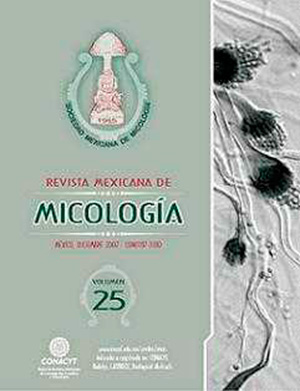Utility of molecular techniques in the diagnosis of histoplasmosis
DOI:
https://doi.org/10.33885/sf.2007.3.1006Keywords:
Histoplasma capsulatum, diagnosis, PCR, molecular techniquesAbstract
Histoplasmosis is a systemic mycosis distributed worldwide, associated to birds and
bats guano. Diagnosis is achieved through the isolation of Histoplasma capsulatum var.
capsulatum in clinical samples and complemented with immunodiagnostic procedures;
however, both isolation and immunodiagnosis pose limitations, such as the slow growth of
the fungus to perform the mycological diagnosis and the immune cross-reaction with other
fungal species causing similar nosologies. These handicaps have demanded more efficient
methods to detect accurately the presence of the pathogen in infected individuals. Recently,
molecular tests have been introduced to reveal small amounts of genetic material of the
fungus in clinical samples. For the detection of H. capsulatum, hybridization techniques of
the fungal DNA through Southern blot and in solution have been developed, as well as
Polymerase Chain Reaction (PCR) with an adequate probe. PCR is the most used technique,
because it facilitates a sensitive and fast diagnosis. Although these techniques have been
widely accepted in the clinical practice, they also present handicaps that have not allowed
replacing the classical techniques used in the mycology laboratory. Therefore, it is
recommended to combine both techniques to ensure an accurate diagnosis.
Downloads
Downloads
How to Cite
Issue
Section
License
Copyright notice
Open access policy
The authors who publish in this journal accept the following conditions:
In accordance with copyright laws, Scientia Fungorum recognizes and respects the authors’ moral rights, as well as the ownership of property rights, which will be transferred to the journal for dissemination in open access. Scientia Fungorum does not charge for submission and processing of articles for publication.
All the texts published by Scientia Fungorum –with no exception– are distributed under a Creative Commons License Attribution-NonCommercial-ShareAlike 4.0 International (CC BY-NC-SA 4.0), which allows third parties to use the publication as long as the work’s authorship and its first publication in this journal are mentioned.
The authors can enter into independent and additional contractual agreements for the nonexclusive distribution of the version of the article published in Scientia Fungorum (for example include it into an institutional repository or publish it in a book) as long as it is clearly and explicitly indicated that the work was published for the first time in Scientia Fungorum.
For all the above, the authors shall send the form of Letter-transfer of Property Rights for the first publication duly filled in and signed by the author(s). This form must be sent as a complementary file.
This work is licensed under a Creative Commons Attribution-NonCommercial-ShareAlike 4.0 International license (CC-By-NC-SA 4.0).



